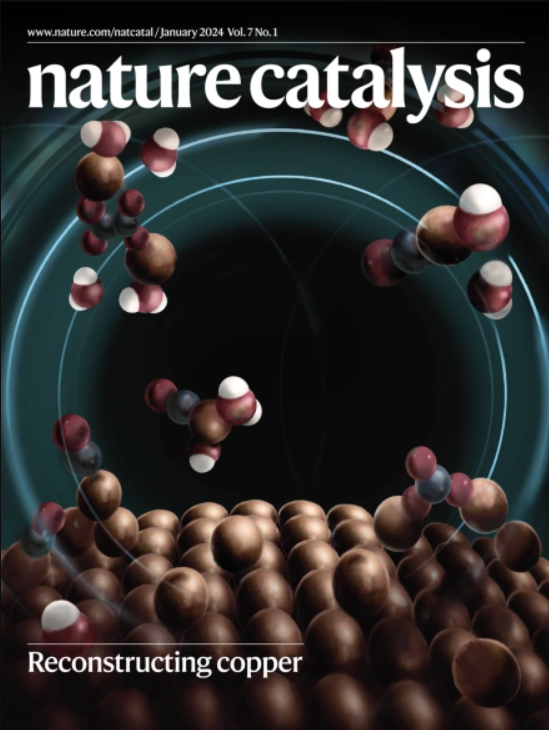Under pressure
IF 42.8
1区 化学
Q1 CHEMISTRY, PHYSICAL
引用次数: 0

在压力下
在固体上施加大压力会引起晶格压缩。在金属氧化物的情况下,这个过程有利于缩短金属-氧键,同时增加原子和离子的扩散活化能。因此,该团队开发了一种WO3的热退火工艺,该工艺依赖于在电加热高压室中应用千兆帕斯卡范围的压力(12,000 bar)。一套光谱技术和电子显微镜分析证实,与在H2气氛下退火的原始材料或WO3样品(表面和整体都有OVs)不同,高压辅助热退火方法产生的WO3样品的OVs选择性地位于表面。值得注意的是,OVs的这种排列方式对WO3的不同性质产生了积极的影响,这些性质对光催化至关重要,例如其激子结合能,并且在光照射下导致载流子密度和光电流的增加。结果,该体系在分子氧的光催化活化过程中表现出了性能的增强,一些测试反应(如光促进H2O2的产生或胺的好氧氧化偶联)证明了这一点。在这个阶段,这种方法对其他传统半导体的适用性尚未得到证明,尽管它似乎是合理的。因此,需要进一步的研究来揭示该方法在光催化和已知OVs触发有趣反应性的其他领域的实际范围。
本文章由计算机程序翻译,如有差异,请以英文原文为准。
求助全文
约1分钟内获得全文
求助全文
来源期刊

Nature Catalysis
Chemical Engineering-Bioengineering
CiteScore
52.10
自引率
1.10%
发文量
140
期刊介绍:
Nature Catalysis serves as a platform for researchers across chemistry and related fields, focusing on homogeneous catalysis, heterogeneous catalysis, and biocatalysts, encompassing both fundamental and applied studies. With a particular emphasis on advancing sustainable industries and processes, the journal provides comprehensive coverage of catalysis research, appealing to scientists, engineers, and researchers in academia and industry.
Maintaining the high standards of the Nature brand, Nature Catalysis boasts a dedicated team of professional editors, rigorous peer-review processes, and swift publication times, ensuring editorial independence and quality. The journal publishes work spanning heterogeneous catalysis, homogeneous catalysis, and biocatalysis, covering areas such as catalytic synthesis, mechanisms, characterization, computational studies, nanoparticle catalysis, electrocatalysis, photocatalysis, environmental catalysis, asymmetric catalysis, and various forms of organocatalysis.
 求助内容:
求助内容: 应助结果提醒方式:
应助结果提醒方式:


